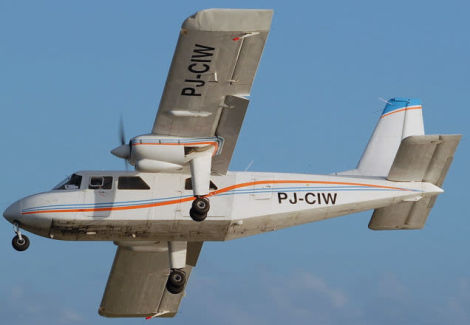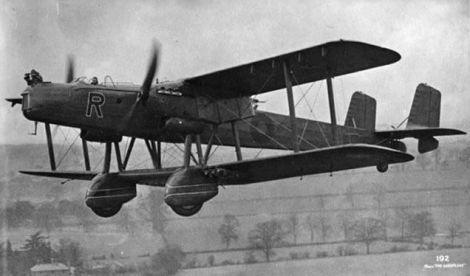Welcome to This Date in Aviation History, getting of you caught up on milestones, important historical events and people in aviation from June 12 through June 14.
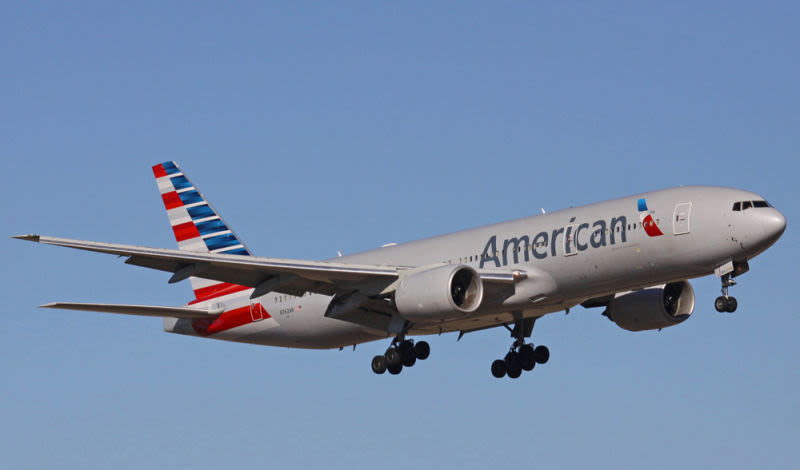
June 12, 1994 – The first flight of the Boeing 777. As the commercial airline industry progressed through the 1950s and 1960s, airliners got longer but not necessarily wider. The Boeing 707 and Douglas DC-8 dominated the market, but they were limited to six-across seating, and there were practical limits on just how long an aircraft could be made. International airlines clamored for higher passenger loads, so the Boeing Company responded with the 747, the world’s first wide-body airliner, which entered service in 1970. They followed the 747 with the narrow-body 757 and wide-body 767 in response to new airliners manufactured by their main rival Airbus, and both the 757 and 767 were immediately successful and continue flying today, though in decreasing numbers.
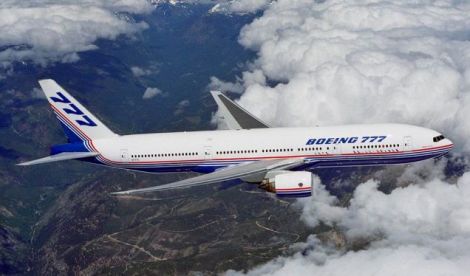
Following Boeing’s pioneering launch of the 747, Douglas followed suit with their own wide-body DC-10, and Lockheed introduced the L-1011, both of which were three-engined trijets. However, Boeing found themselves with a gap in passenger capacity between the 767 and 747, so they began to develop their own trijet to fill the void. But advances in engine technology meant that transoceanic flights could now be made with airliners that had only two engines, and airlines had begun flying the twinjet 767 regularly on long intercontinental routes. So Boeing dropped the trijet concept and went instead with an enlarged 767, which they called the 767X. They also proposed a 767 with a larger cross-section while retaining the commonality of the earlier 767 cockpit. But the airlines weren’t interested, saying that they wanted an even wider fuselage with more interior options, intercontinental range, and lower operating costs.

So Boeing went back to the drawing board and developed an entirely new airliner, the first to be designed entirely using computer-aided design (CAD) and Boeing’s first to use fly-by-wire controls. Boeing also allowed their potential customers to have a say in the design and development of the aircraft. Based on their input, Boeing offered 9-across seating in coach with the ability to accommodate as many as 325 passengers. To make room for all the seats and cargo, Boeing designed the 777 as the first airliner with a fully circular cross section and the largest twinjet in the world. The 777 comes with engine options from Pratt & Whitney, Rolls-Royce and General Electric, with the GE90 being the largest and most powerful high bypass turbofan in use today, producing 115,000 pounds of thrust. An even larger engine will be made available with the launch of the 777X in 2019. In a three-class seating arrangement, the 777-300ER, the most popular variant, can accommodate nearly 400 passengers with a range of 8,400 miles. The 777-200LR is capable of even greater range, and can fly halfway around the globe without refueling.
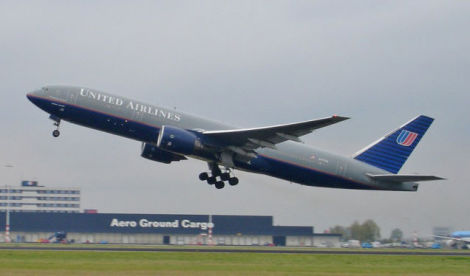
On May 15, 1995, United Airlines received the first 777, powered by Pratt & Whitney PW4000 engines, and the first revenue flight took place on June 7, 1995 from London Heathrow to Dulles International in Washington, DC. British Airways debuted the first GE90-engined 777 in November of that year, while Thai Airways International received the first 777 to be powered by Rolls-Royce Trent 877 engines in March 1996. Today, the Triple-Seven is flown by 68 customers worldwide, with Dubai-based Emirates operating the lion’s share of aircraft with 161 in the air. United Airlines is a distant second with 88 in service. Before the arrival of the Airbus A350-900 flying a route for Singapore Airlines from Newark to Singapore, 777s of Qatar Airlines held the record for the longest passenger flight, from Qatar to New Zealand, a distance of 9,032 miles.
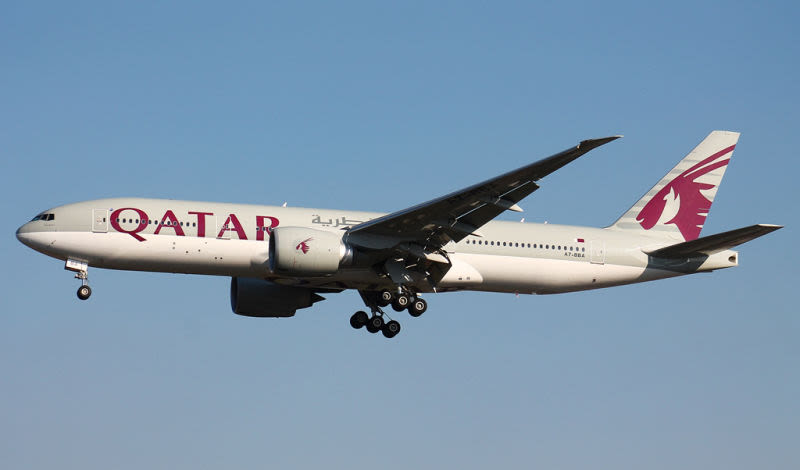
Currently, Boeing has received orders for nearly 2,000 777s of all variants, with over 1,950 deliveries, though only the 777-300ER, 777F freighter remain in production. Boeing has plans for further development of the 777 with its 777X program, which will see new carbon-fiber-reinforced wings for greater efficiency and folding wingtips for complete airport gate compatibility. The cabin will also be widened and enhanced based on experience learned from development of the 787 Dreamliner. Two variants of the 777X—the 777-8 and 777-9—are expected to enter service in 2020.
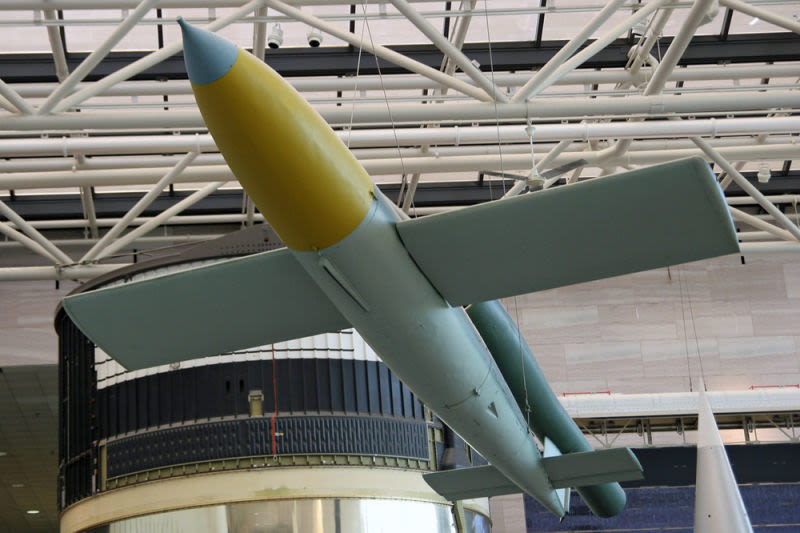
June 12, 1944 – The first V-1 flying bomb falls on England. The V-1 flying bomb, along with the V-2 ballistic rocket, were known to the Germans as Vergeltungswaffen, or retaliatory weapons. The Allies often referred to them as vengeance weapons, and when guided bombs began appearing in the skies in the final year of the war, the V-weapons were often seen as the last gasp of a desperate Germany as it faced the inevitable prospect of losing WWII. But the history of the V-1 actually began began three years before the war with the work of German engineer Fritz Gosslau who developed a remotely-controlled aircraft in 1936. In 1939, the Reichsluftfahrtministerium (German Air Ministry) received a proposal for a flying bomb that could carry a 2,200-pound payload over 300 miles, but it was plagued with inaccuracy. Even though most of the problems with the guidance system were worked out by 1941, Adolf Hitler did not approve the project until June 1944, soon after the Allied invasion of occupied Europe on D-Day.
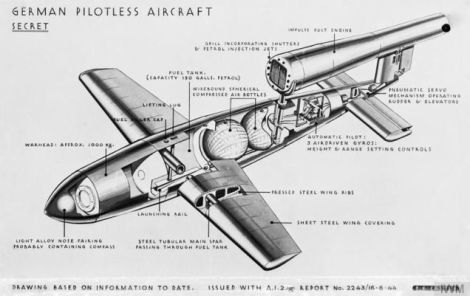
The V-1 featured a welded sheet metal fuselage, plywood wings, and was powered by a pulsejet engine, the first of its kind to power an aircraft. The pulsejet had a distinctive sound as it flew, and the Allies nicknamed the V-1 “buzz bomb” and “doodlebug.” As the progenitor to the modern cruise missile, the V-1 was controlled in flight by an internal gyroscope. A propeller-driven odometer measured the distance the missile was to fly, and then explosive bolts disabled the control system and the flying bomb dove towards the target. Though fairly inaccurate at first, refinements in the control system eventually enabled the V-1 to strike with an accuracy of roughly seven miles around the intended target. This certainly wasn’t accurate enough for use as a tactical weapon, but as a strategic weapon of terror, it was close enough, as most of its targets were large cities and their civilian populations. At the peak of operation, more than 100 V-1s per day were fired at southeast England, but continuing problems with guidance systems and poor engine reliability meant that only about 25-percent of the buzz bombs actually reached their targets. Nevertheless, over 6,000 British civilians fell victim to the V-1. In addition to the ground-launched bombs, about 1,200 V-1s were also air-launched from modified Heinkel He 111s which increased the bomb’s operational range.
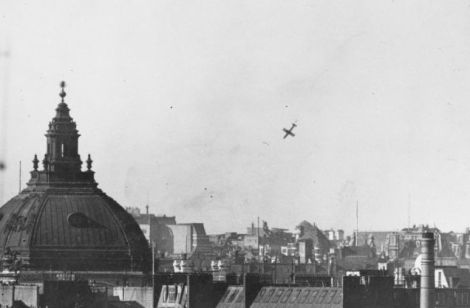
When the first V-1s appeared over England, the only aircraft fast enough to intercept the low-flying bombs was the Hawker Tempest, though eventually Supermarine Spitfires, North American P-51 Mustangs and Republic P-47 Thunderbolts were modified to increase their speed. De Havilland Mosquitos also proved relatively effective, and the early jet-powered Gloster Meteor claimed a handful of buzz bombs as well. The relatively small size of the V-1 made it a difficult target for guns, and the most effective method to stop the V-1s was to fly alongside, put a wingtip underneath the V-1's wingtip, then flip the flying bomb over, causing it to crash.
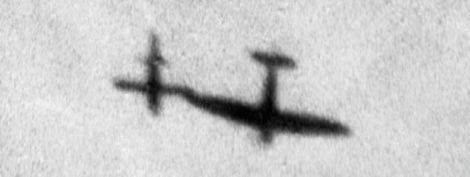
As the Allies started retaking France and began capturing territory in Germany, they overran the V-1 launch sites and the number of attacks dropped sharply. Towards the end of the war, V-1s were launched against Antwerp and other sites in Belgium before the final launch site was captured in October 1944. While the bombs themselves weren’t terribly effective, the attacks did cause the Allies to divert about a quarter of their bomber force to attack the launch sites, often without effect. By the end of V-1 operations, 9,521 buzz bombs had been launched against England and Belgium, an impressive number that nevertheless had a negligible affect on the ultimate outcome of the war.
Short Takeoff
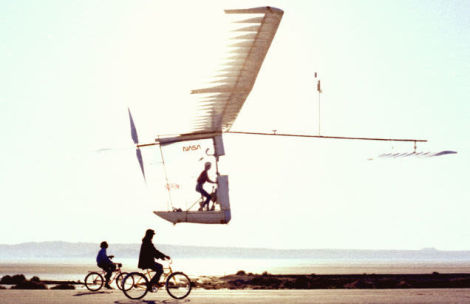
June 12, 1979 – The Gossamer Albatross flies across the English Channel. Designed and built by American aeronautical engineer Dr. Paul MacCready and built by his company AeroVironment, the Albatross was the first human-powered aircraft to cross the English Channel, claiming the second Kremer prize along with its £100,000 purse. The Albatross was MacCready’s second human-powererd aircraft after the earlier Gossamer Condor, which had won the first Kremer prize in 1974 for completing a one-mile figure-eight course. Powered and flown by amateur cyclist and hang glider pilot Bryan Allen, the Albatross completed the 22.2-mile crossing in 2 hours and 49 minutes at a top speed of 18 mph and an altitude of just 5 feet.
June 12, 1965 – The first flight of the Britten-Norman Islander, a light utility aircraft, regional airliner and cargo aircraft, and one of the best-selling commercial aircraft produced in Europe. Designers John Britten and Desmond Norman developed the Islander to satisfy a demand for an inexpensive twin-engine transport, and sought to produce an aircraft that was capable of carrying heavy loads while still being simple to maintain. With 1,280 built since 1965, the Islander has proven to be a tremendous success, and it remains in production today. The Islander was developed into numerous variants, and serves with the British Army and UK police forces, as well as over 30 military operators and many civilian operators worldwide.

June 12, 1934 – The Air Mail Act of 1934 is enacted. As a result of the Air Mail Scandal of the 1930s, and following congressional investigations into the awarding of Air Mail contracts to certain airlines, the Air Mail Act reintroduced competitive bidding for lucrative air mail routes and prevented aircraft manufacturers from operating passenger airlines. The new act superseded the earlier act of 1930, and resulted in the restructuring of the airline industry, brought new regulations for passenger flight, and spurred the modernization of the US Army Air Corps. To circumvent the new restrictions, aircraft manufacturers simply changed their names, resulting in the creation of American Airlines, Northwest Airlines, Eastern Airlines and United Airlines.
June 12, 1930 – The first flight of the Handley Page Heyford, a biplane night bomber developed to replace the Vickers Virginia in RAF service. The Heyford arose from the 1927 Air Ministry specification B.19/27 which called for a heavy night bomber that could carry 1,546 pounds of bombs at a range of 920 miles. The Heyford’s two Rolls-Royce Kestrel 12-cylinder engines provided a top speed of 142 mph. As the last biplane bomber to serve the RAF, the Heyford displayed an interesting mixture of both WWI-era and more modern construction, with metal frame, fabric-covered wings supporting an aluminum monocoque forward fuselage, and a fabric-covered tail. The Heyford, named for the base where it was first deployed, entered service in 1933 and eventually filled nine squadrons by the end of 1936. With the arrival of more modern monoplane bombers by 1937, the Heyford was retired in 1939.
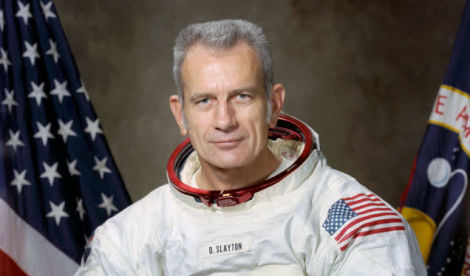
June 13, 1993 – The death of Donald Kent “Deke” Slayton. Slayton was born on March 1, 1924 in Sparta, Wisconsin and enlisted in the US Army Air Forces in 1942 where he trained as a bomber pilot flying the North American B-25 Mitchell and Douglas A-26 Invader. Following the war, Slayton served as a test pilot and, in 1958, was selected as a member of the Mercury Seven, America’s first group of astronauts. Due to an irregular heartbeat, Slayton was the only member of the group never to fly a Mercury program mission, but he remained in NASA service as the Chief of the Astronaut Office and later as the Director of Flight Crew Operations. Slayton finally went to space as a member of the Apollo-Soyuz Test Project that saw a Soviet and an American spacecraft dock together in Earth orbit. Slayton played a managerial role in the Space Shuttle program, and retired from NASA in 1982.

June 13, 1983 – Pioneer 10 becomes the first man-made object to leave the Solar System. The Pioneer 10 space probe was developed by NASA Ames Research Center to explore Jupiter. Launched on March 3, 1972, Pioneer 10 reached the largest planet in our Solar System in November 1973 and transmitted roughly 500 images as it passed as close as 82,000 miles to the planet. Following its successful flyby of Jupiter, Pioneer 10 became the first spacecraft to achieve escape velocity from the Solar System. On January 23, 2003, at a distance of 12 billion kilometers from Earth, radio communications were lost when the transmitter ran out of electrical power. If left undisturbed, Pioneer 10 will continue towards the star Aldebaran more than 68 light years away, though it will take more than two million years to reach the star at its current velocity.

June 14, 1985 – The hijacking of TWA Flight 847, a Boeing 727 (N64339) flight from Cairo to San Diego with scheduled stops in Athens, Rome, Boston and Los Angeles. After taking off from Athens, the flight was hijacked by members of the groups Hezbollah and Islamic Jihad who were seeking the release of 700 Shi’ite Muslim prisoners in Israeli custody. The hijackers diverted the flight to Beirut, then Algiers, where 20 hostages were released. Then it flew back to Beirut, where more armed hijackers boarded the plane, then flew again to Algiers, and finally to Beirut once more. There, the remaining hostages were released, though one passenger, US Navy diver Robert Stethem, was executed and his body dumped on the tarmac in Beirut. Israel released the 700 prisoners, though they claimed that it was not a result of the hijacking. The Arleigh Burke-class destroyer USS Stethem (DDG-63) was named in honor of Robert Stethem, and the highjacking served as the inspiration for the 1986 film The Delta Force.
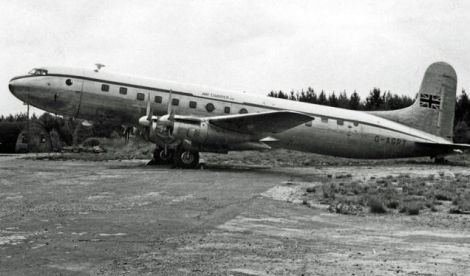
June 14, 1945 – The first flight of the Avro Tudor, a piston-powered airliner derived from the Avro Lincoln bomber and Britain’s first pressurized airliner. Though a successful design in its own right, the Tudor was seen by the airlines as nothing more than a pressurized Douglas DC-4, which had garnered much success since its introduction in 1942, and customers showed more interest in the American airliner. Where the DC-4 featured a tricycle landing gear, the Tudor’s tail-dragger arrangement was seen as less desirable. Though the Tudor was continuously upgraded by more powerful engines and greater carrying capacity, only 38 were built, and it served mainly with British carriers. The Tudor did serve as the basis for the Avro Ashton turbojet powered airliner, but that aircraft was never intended for production.
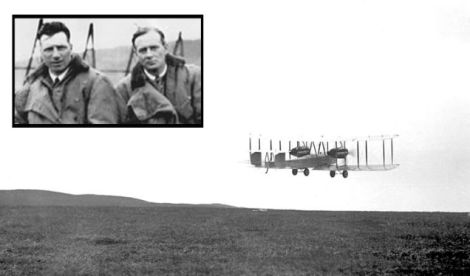
June 14, 1919 – Capt. John Alcock and Lt. Arthur Whitten-Brown complete the first nonstop crossing of the Atlantic Ocean. In 1913, the London newspaper Daily Mail offered a prize of £10,000 for the first aviators to cross the Atlantic ocean in less than 72 hours. The contest was suspended during WWI, but then restarted in 1918. Flying a modified Vickers Vimy bomber, Alcock and Brown took off from Lester’s Field in Newfoundland and headed for Ireland, the closest point from North America. Flying through thick fog, rain, and snow, and battling equipment failures that left their aircraft unheated and difficult to control, the team nearly crashed twice before a rough landing in Clifden, Ireland 16-and-a-half hours later after covering nearly 2,000 miles of open ocean. Winston Churchill, the Secretary of State for Air, awarded Alcock and Brown the cash prize, and the pair was also awarded the Most Excellent Order of the British Empire (KBE) by King George V.
Connecting Flights
If you enjoy these Aviation History posts, please let me know in the comments. And if you missed any of the past articles, you can find them all at Planelopnik History. You can also find more stories about aviation, aviators and airplane oddities at Wingspan.
